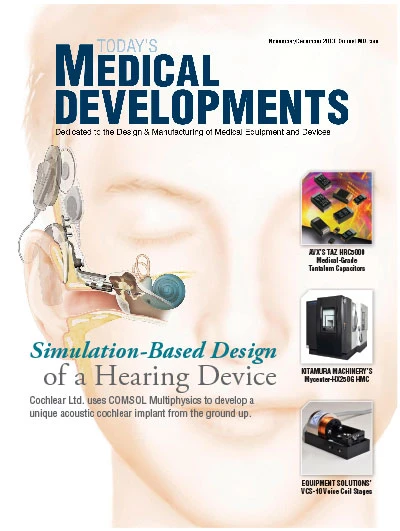Patients at the University of Rochester Medical Center’s Eye Institute say they are seeing a “whole new world” since doctors there began using the tiniest device ever available to help prevent the blinding effects of their glaucoma.
Ophthalmologist Shakeel Shareef, M.D., is the first in the region to use the iStent Trabecular Micro-Bypass Stent to manage the effects of glaucoma, one of the leading causes of blindness in the United States.
“This is an amazing device to use to support patients who are suffering with glaucoma and cataracts who can’t tolerate the many eye drops required every day,” says Shareef, the region’s leading microsurgeon who has performed 18 procedures since mid-April. The device has only been approved by the FDA for adults on a daily regimen of eye drops, but Sharef says all patients who have had the tiny stents placed have experienced quick vision recovery, ended the use of glaucoma medications, and had eye pressure drop dramatically.
The titanium, tube-like iStent is 1mm long and has a microscopic opening of 120µm in diameter. It is implanted during surgery to remove cataracts.
High pressure in the eye is the only modifiable factor when treating glaucoma and the number one risk factor for developing glaucoma. The main cause of the elevated eye pressure is poor drainage in the eye. A section of tissue, called trabecular meshwork, gets clogged, creating resistance and then fluid builds up, increasing intraocular pressure. The iStent allows the fluid to bypass the trabecular meshwork redirecting it to drain through normal channels.

Henrietta, N.Y., resident Esther Bonis, 86, has glaucoma and also developed cataracts. She found the eye drops prescribed for the glaucoma to be, “really irritating and messy.”
Bonis sought surgery, and earlier this year, Shareef performed two separate procedures to alleviate the pressure. First he performed the traditional procedure, which involves creating a flap and drainage channel, and for the second one he implanted the new iStent.
 After the first surgery, the traditional approach, Bonis said there was some discomfort from the stitches. After recovery, Bonis chose to have her right eye corrected this past June, this time using the new iStent, which had just been approved for local use.
After the first surgery, the traditional approach, Bonis said there was some discomfort from the stitches. After recovery, Bonis chose to have her right eye corrected this past June, this time using the new iStent, which had just been approved for local use.
“Now the colors I see are so intense,” Bonis says. “Before the surgery purple looked kind of muddy brown. Now it’s amazing and just gorgeous.” She is no longer using eye drops or any other medications to control the glaucoma. “I’m so happy because it’s like a whole new world,” she states.
University of Rochester Medical Center, Flaum Eye Institute
Rochester, N.Y.
www.urmc.rochester.edu
Elizabeth Engler Modic is editor of TMD and can be reached at emodic@gie.net or 330.523.5344.
Adapted from Material Provided by from the University of Rochester Medical Center
Get curated news on YOUR industry.
Enter your email to receive our newsletters.
Explore the November December 2013 Issue
Check out more from this issue and find your next story to read.
Latest from Today's Medical Developments
- Pioneering battery-free cardiac implants
- KBC Tools & Machinery marks its 60th anniversary, Founder’s Day
- Address the challenges of machining high-temperature aerospace components
- Elevate your manufacturing operations with April’s Manufacturing Lunch + Learn
- AdvaMed statement on tariff announcement
- Collets – Not all are created equal
- ENGEL expands production capacities in the Americas; new plant opened in Mexico
- MFI brings fast, high-polishing additive parts finishing to Rapid + TCT 2025






